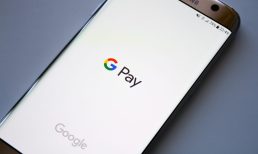At the start of the pandemic, restaurants realized that if they wanted to maintain their relationships with their customers through lockdown, they would have to make their menus available via online ordering platforms. Now, as online ordering has evolved into a long-term habit, consumers are no longer just looking for ways to access their favorite eateries. They now expect to be able to find the best deals on their favorite items.
Will Said, co-founder and CEO of MealMe, a company that offers a search engine by which consumers can shop across multiple restaurants, food stores and ordering apps, explained to PYMNTS how consumers’ behavior is driven by the desire to find the best value for specific products rather than by brand loyalty to a specific restaurant or grocer.
“What their customers are searching for are products because it turns out that the savings are just so much more,” he said. “If you search for a given coffeehouse chain, you might get a few results. If you search for coffee, you get thousands of results… It turns out that not only is there a pretty large variance in delivery prices for the same store; there’s a large variance in item prices for the exact same product.”
About a third of all consumers now order via third-party delivery services each month, according to research from the March/April edition of PYMNTS’ Digital Divide series, “The Digital Divide: Regional Variations in U.S. Food Ordering Trends and Digital Adoption,” created in collaboration with Software-as-a-Service (SaaS) customer experience management (CXM) solutions provider Paytronix. The study, which drew from a February survey of more than 2,500 U.S. adults, found that 32% of respondents had used an aggregator in the previous 30 days.
Read more: New Research Shows That Regional Dining Quirks Matter in Tailoring Restaurant Offers
The Chicken Sandwich Wars
Advertisement: Scroll to Continue
This trend is especially pronounced for items that fare well on delivery platforms. For instance, if a consumer is craving pizza, they know they have lots of options. Noting consumers’ desire for specific foods via these channels, many restaurant brands have either added new items to their menus in the past couple of years or launched entire virtual brands focused on delivery-friendly foods.
Take, for instance, the chicken sandwich wars of 2020 and 2021. Noting consumers’ searching behavior, with many restaurant customers specifically looking for the item on digital platforms, dozens of brands announced new chicken sandwich offerings. These included restaurants that had always focused on chicken, such as KFC and Chick-fil-A, and those whose focus is typically on other food categories, like McDonald’s and Burger King.
See more: KFC to Triple Global Store Count Amid Chicken Sandwich Wars
Similarly, chicken wings saw a surge in popularity. Noting this trend, in 2020, Brinker International, parent company of Chili’s Grill & Bar and Maggiano’s Little Italy, announced the launch of wing-centric virtual brand It’s Just Wings on third-party delivery services. The following year, Applebee’s partnered with Uber Eats to launch virtual brand Cosmic Wings.
In fact, wings were so popular that there were widespread shortages, prompting Wingstop to turn to other parts of the chicken, launching virtual brand Thighstop.
Read more: Wingstop’s New Virtual Brand ‘Thighstop’ Turns Chicken Shortage Into Opportunity
The New C-Store
MealMe has noticed the same trend when consumers are ordering grocery or convenience store items.
“We see people searching for individual products that are commoditized as well: brand-name toothpaste, vodka, energy drinks,” Said explained. “If you want a gallon of a certain kind of organic whole milk, there’s 1,000 stores that sell that brand in San Francisco.”
He added that, even when it is “the same exact product” at different retailers, it is listed at a different price “every single time” and across each different delivery service.
The share of consumers ordering groceries online each month is similar to the share purchasing from aggregators. In fact, according to data from PYMNTS’ April study, “ConnectedEconomy™ Monthly Report: 3 Ways Consumers Are Dealing With Inflation,” which drew from a March survey of more than 2,800 U.S. adults, 32% of consumers reported ordering groceries online that month.
See more: 6 in 10 Consumers Buying Only the Essentials as Inflation Rises
Said argued that, to meet the needs of this third of all consumers, it is essential to offer the ability to look at different prices across different retailers.
“I think that if it’s just one, single platform with its own prices, and there’s no comparison, it might not take off in today’s economy,” he said.
All in Context
One way grocers and restaurants are looking to seize on the rise of digital ordering is by leveraging contextual commerce, integrating shoppable moments into consumers’ other online routines.
Matthew Bouchner, MealMe’s co-founder and president, predicted that the scope of these integrations will widen significantly in the years ahead.
“Imagine if you’re scrolling through TikTok, and you see a really good-looking picture or video of pizza, and you could order that pizza directly to your house,” he said. “Imagine you read a blog post, and in that blog post that talks about this really cool recipe — what if you could order all of those recipes to your house? We think that’s the future… We think that every blog, every website, every app is going to have ordering ability.”




